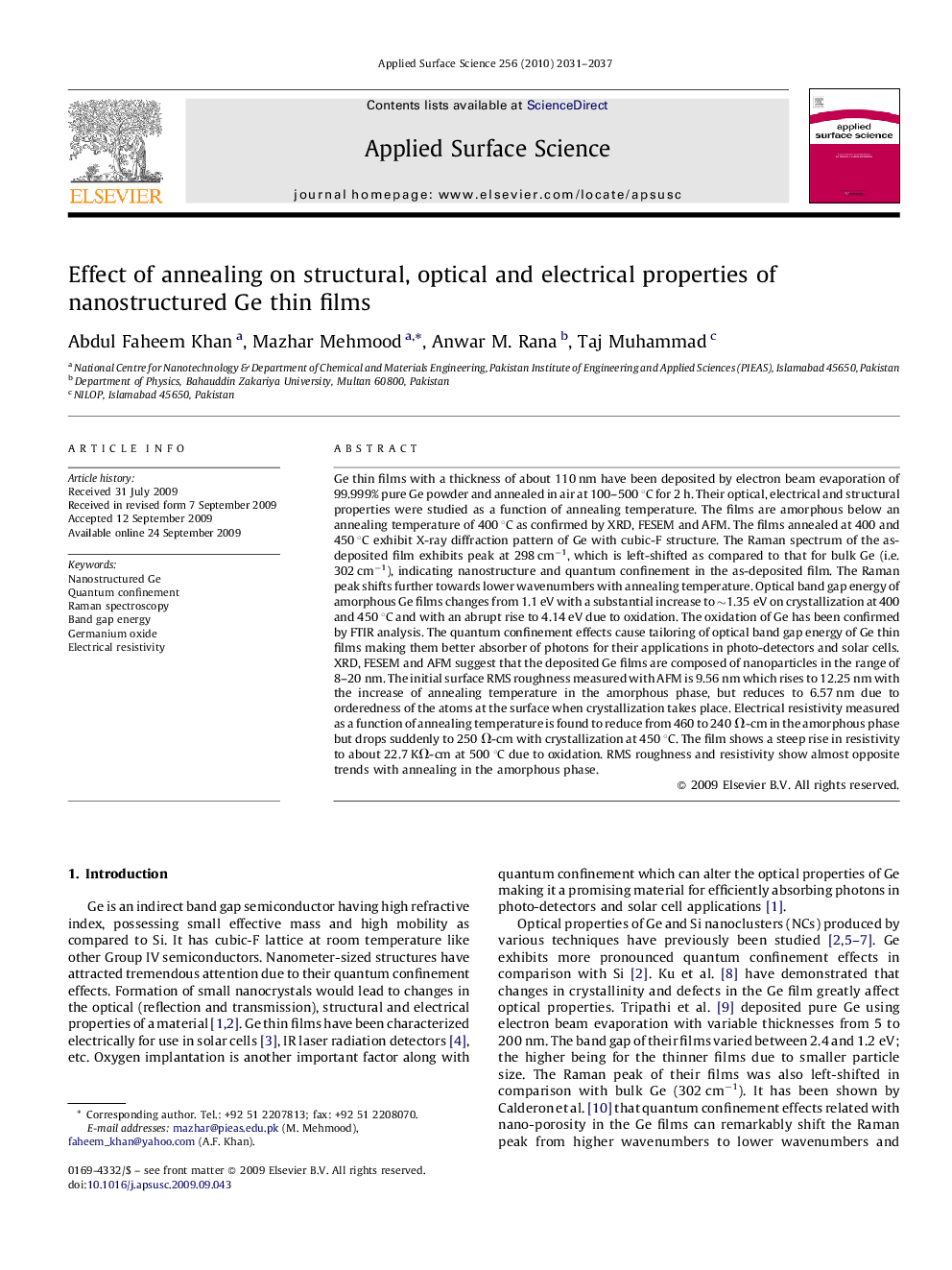| کد مقاله | کد نشریه | سال انتشار | مقاله انگلیسی | نسخه تمام متن |
|---|---|---|---|---|
| 5365942 | 1388341 | 2010 | 7 صفحه PDF | دانلود رایگان |

Ge thin films with a thickness of about 110 nm have been deposited by electron beam evaporation of 99.999% pure Ge powder and annealed in air at 100-500 °C for 2 h. Their optical, electrical and structural properties were studied as a function of annealing temperature. The films are amorphous below an annealing temperature of 400 °C as confirmed by XRD, FESEM and AFM. The films annealed at 400 and 450 °C exhibit X-ray diffraction pattern of Ge with cubic-F structure. The Raman spectrum of the as-deposited film exhibits peak at 298 cmâ1, which is left-shifted as compared to that for bulk Ge (i.e. 302 cmâ1), indicating nanostructure and quantum confinement in the as-deposited film. The Raman peak shifts further towards lower wavenumbers with annealing temperature. Optical band gap energy of amorphous Ge films changes from 1.1 eV with a substantial increase to â¼1.35 eV on crystallization at 400 and 450 °C and with an abrupt rise to 4.14 eV due to oxidation. The oxidation of Ge has been confirmed by FTIR analysis. The quantum confinement effects cause tailoring of optical band gap energy of Ge thin films making them better absorber of photons for their applications in photo-detectors and solar cells. XRD, FESEM and AFM suggest that the deposited Ge films are composed of nanoparticles in the range of 8-20 nm. The initial surface RMS roughness measured with AFM is 9.56 nm which rises to 12.25 nm with the increase of annealing temperature in the amorphous phase, but reduces to 6.57 nm due to orderedness of the atoms at the surface when crystallization takes place. Electrical resistivity measured as a function of annealing temperature is found to reduce from 460 to 240 Ω-cm in the amorphous phase but drops suddenly to 250 Ω-cm with crystallization at 450 °C. The film shows a steep rise in resistivity to about 22.7 KΩ-cm at 500 °C due to oxidation. RMS roughness and resistivity show almost opposite trends with annealing in the amorphous phase.
Journal: Applied Surface Science - Volume 256, Issue 7, 15 January 2010, Pages 2031-2037